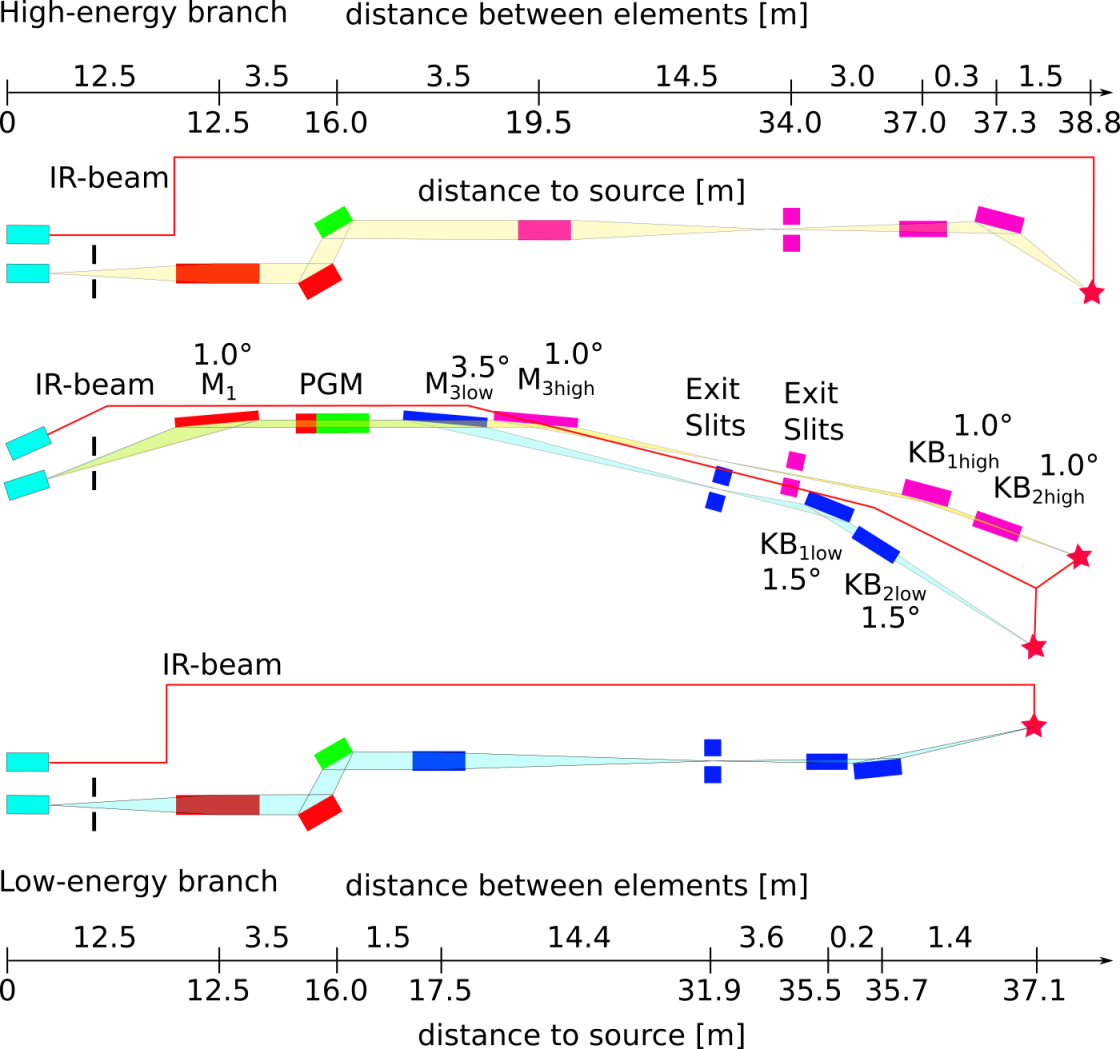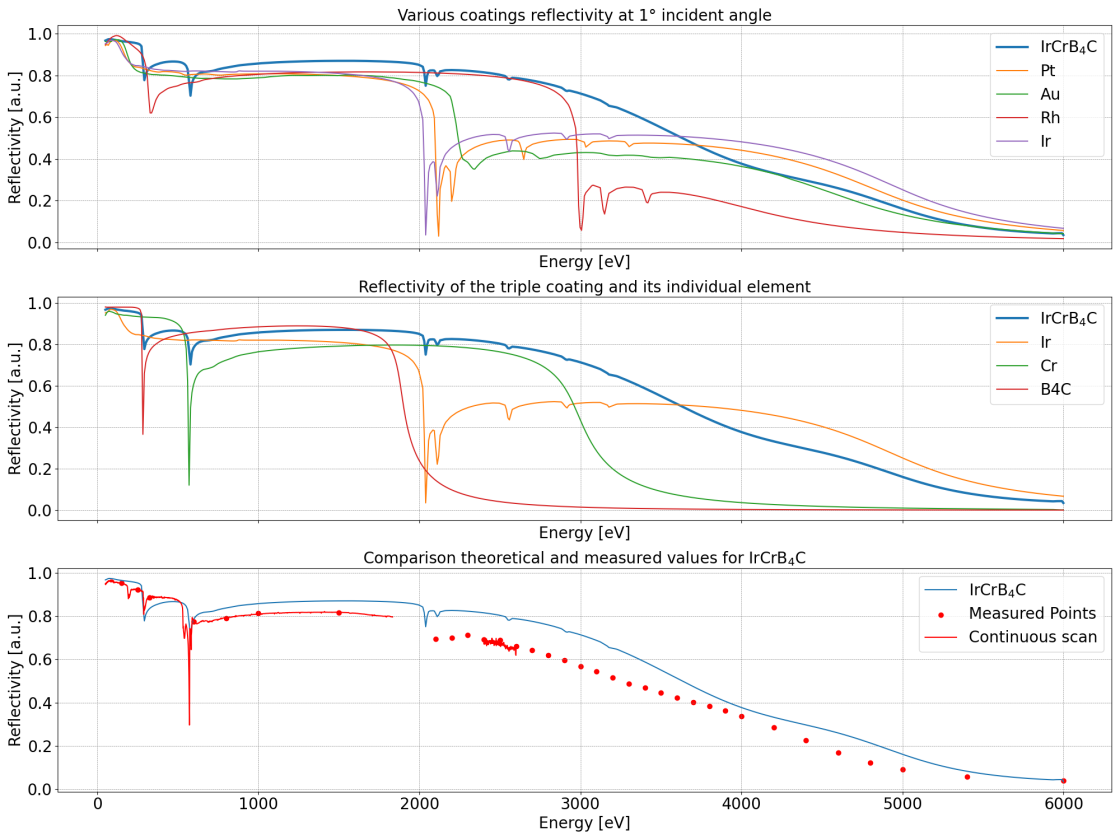Department Optics and Beamlines
ELISA
The Enhanced Liquid Interface Spectroscopy and Analysis (ELISA) is the first beamline to combine soft X-ray and infrared (IR) radiation, both originating from the storage ring, which are incident on the sample surface at the same time and the same location.
Scientific Case
Understanding the complex properties and processes at liquid interfaces is crucial for advancing our knowledge in various environmental and technological processes such as CO2 sequestration, aerosol dynamics, metal corrosion, and electrochemical energy conversion. Addressing these scientific and technological questions, the Enhanced Liquid Interface Spectroscopy and Analysis (ELISA) beamline at BESSY II introduces a novel, integrated approach for the high-fidelity preparation and investigation of liquid interfaces. Designed to cater specifically to the demands of liquid interface science, ELISA leverages the simultaneous application of synchrotron-based soft X-ray and infrared (IR) radiation, a pioneering configuration that allows for spatial and temporal correlation of spectroscopic data. Ambient pressure X-ray photoelectron spectroscopy (APXPS) and reflection absorption IR spectroscopy (RAIRS) constitute the core methodologies employed, providing elemental, chemical, and molecular orientation insights at liquid interfaces. The beamline allows for in situ and operando experiments, while also offering a methodical avenue to monitor radiation-induced damage.
Beamline
The ELISA beamline, designed for cutting-edge research, integrates soft X-rays and infrared (IR) radiation to span a broad energy spectrum, enhancing the study of diverse scientific disciplines. This unique facility is tailored to advance our understanding in fields such as battery technology, (photo)electrochemical systems, and atmospheric chemistry through its sophisticated dual-branch architecture.
The dual-branch design of the ELISA beamline allows for the simultaneous utilization of soft X-rays and IR radiation, covering energy ranges from 40–3500 eV for X-rays and sub-millimeter to micrometer wavelengths for IR. The low-energy branch is dedicated to in situ studies of functional interfaces, in particular those with relevance for batteries and (photo)electrochemical devices, and covers the far UV range (including the Li K-edge) up to the transition metal L edges. The high-energy branch is dedicated to the investigation of liquid-vapor interfaces, for both fast flowing (e.g., jets and droplet trains) and static liquids
(e.g., in a Langmuir trough).
Mirror Triple Coating
The ELISA beamline employs a novel triple coating on its mirrors to significantly enhance the mirror reflectivity up to 3500 eV. This approach uses Iridium on the bottom layer to enhance higher-energy X-rays reflectivity, Chromium in the middle for the middle range, and Boron Carbide (B4C) on the top for the softer X-rays. This layering ensures enhanced efficiency and broadens the beamline's applicability for diverse scientific investigations. Initial measurements indicate that the performance is in good agreement with theoretical calculations, confirming the effectiveness of the coating design.
Multilayer Coated Monochromator
Traditional diffraction grating monochromators have extremely low transmission in the tender X-ray energy range (2 keV – 5 keV). To overcome this limitation, we can coat the optic in the monochromator with a multilayer to increase the transmission.
The ELISA beamline will be equipped with a plane grating monochromator with three different gratings. Next to a 400 l/mm laminar grating and a 1200 l/mm blazed grating, a 2400 l/mm blazed grating will be coated with a C/Cr multilayer.
Integrated IR and X-Ray Analysis
The ELISA beamline is the first soft X-ray beamline to combine X-rays and infrared radiation from the storage ring. The source for IR radiation is a dipole downstream from the dipole used a source of X-rays. The IR and X-ray radiation will be transported to the endstations in separate beam pipes. Preliminary calculations of the spot size of the IR beam demonstrate that a spatial overlap between the X-ray and IR beam on the sample is achievable.
© 04/25 S.V. and S.H.


